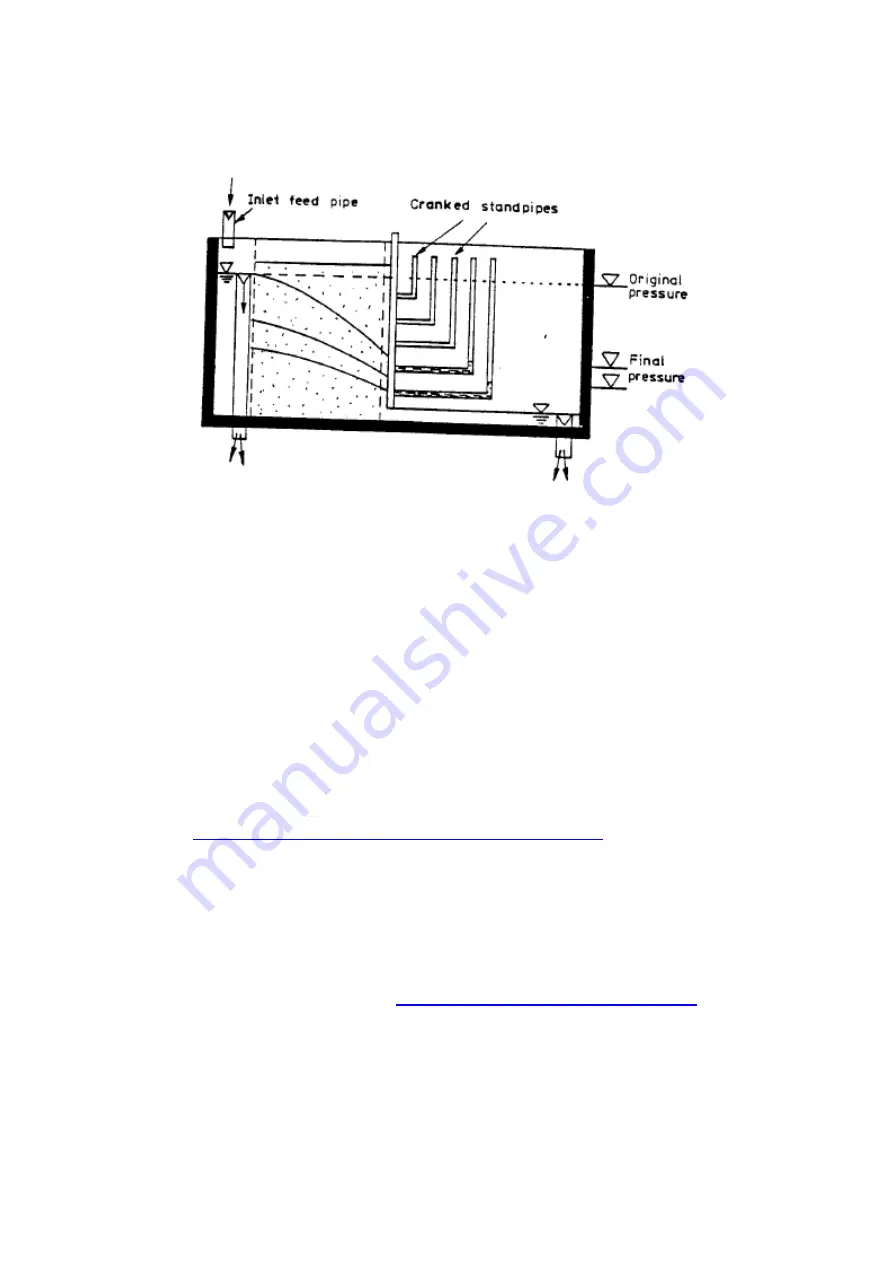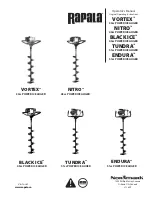
37
Exercise H - Reduction of Lateral Thrust on a Retaining
Wall by Draining
Objective
If water collected behind a retaining wall has no outlet, its hydrostatic pressure
contributes to the lateral thrust of the soil and increases the total pressure load on the
wall. Therefore, wherever possible, we try to drain water which may collect behind
the wall and thus reduce not only the load on the wall but also the dimensions and
cost of the wall.
The current way to drain water from behind a retaining wall is to place a layer of
permeable material (sand, gravel) between the wall and the soil and then to provide
openings in the wall near the bottom.
The objective of this experiment is to demonstrate flow and pressure conditions in a
permeable layer behind a retaining wall.
Equipment Set Up
The wall segment will be simulated by an impermeable PVC plate of the same type
used in
Exercise E - Uplift Pressure on Foundation of Structures
for simulating the
foundation of a structure. In this case, however, the plate is positioned vertically and
should be at least 720mm long so that it can be fixed at the top of the tank by the
special fittings provided at the mid-point of the tank.
The wall segment is fixed vertically into the middle of the tank with standpipes
oriented downstream. A suitable seal is used between the lower end of the plate and
the tank bottom in order to seal off completely the upper pool from the lower pool.
The perforated metal sheet used in
Exercise C - Draining Effect of a Tile Line
is
placed against the upstream side of the wall segment so that it reaches right down to
the bottom of the tank. The sheet serves to prevent the sand from the upper pool
being washed into the lower pool after the seal has been removed from underneath
the wall segment. Therefore, its lower end must not rest on the seal as does the wall
segment.









































